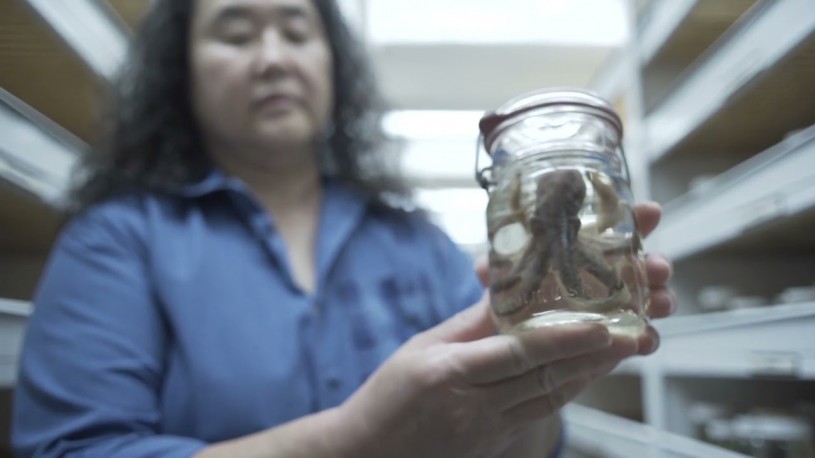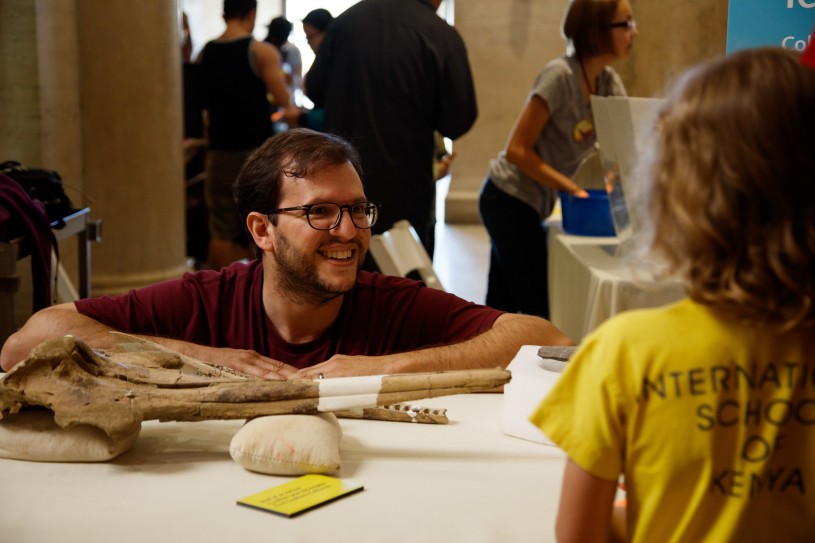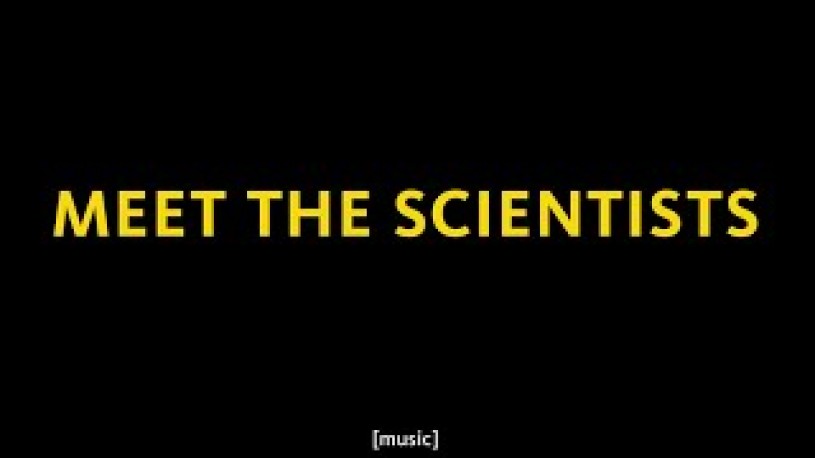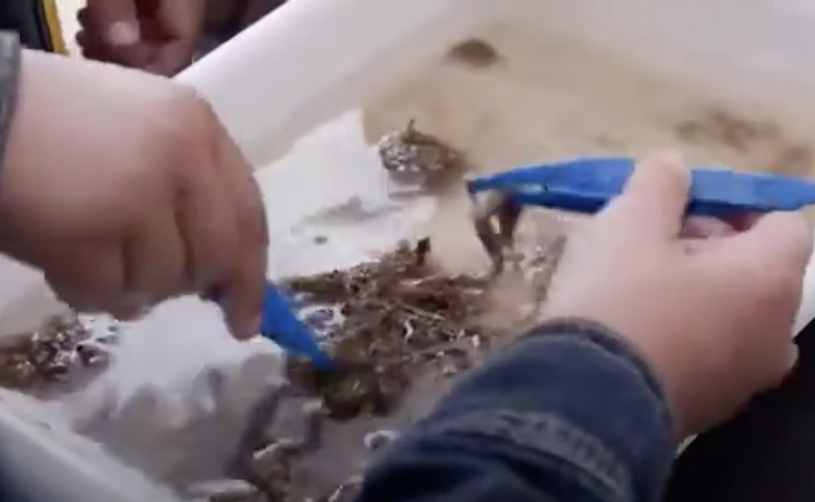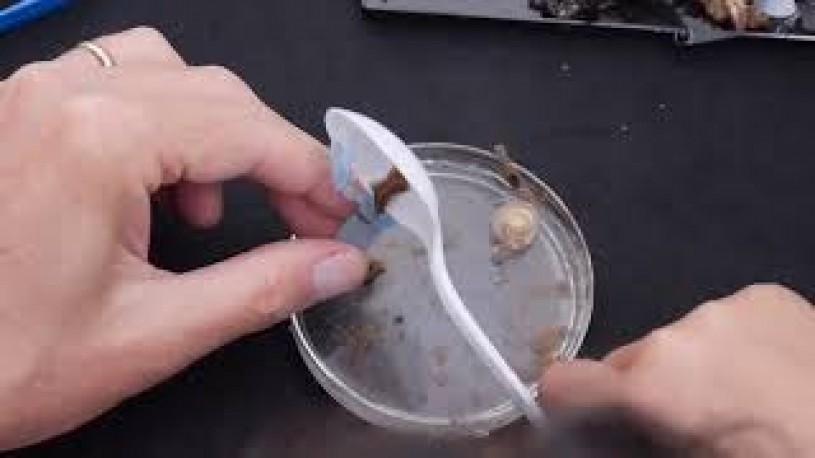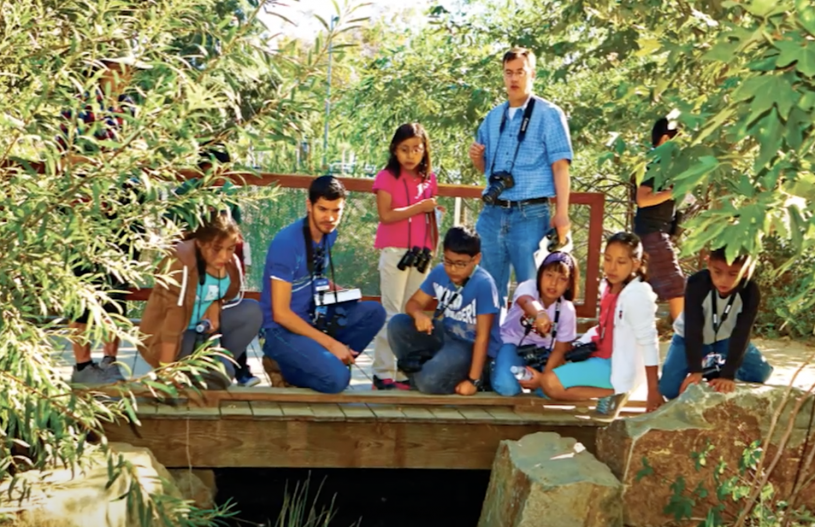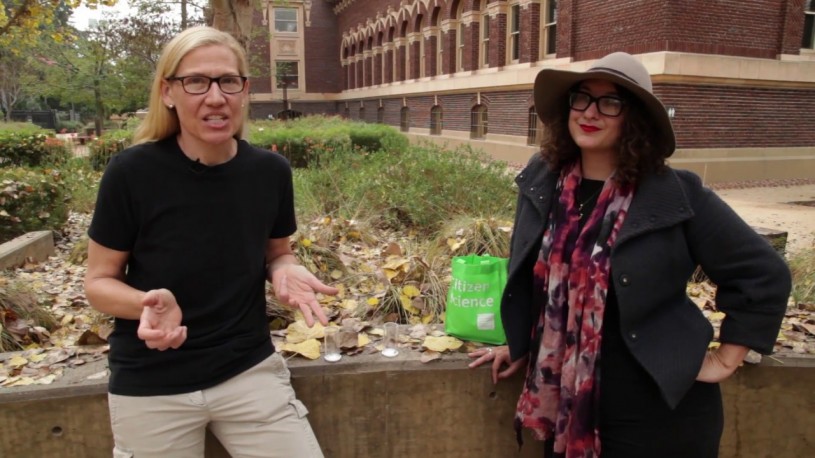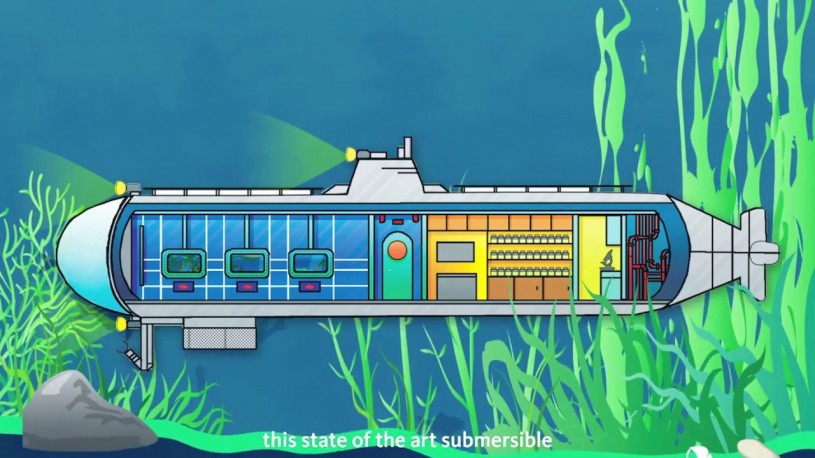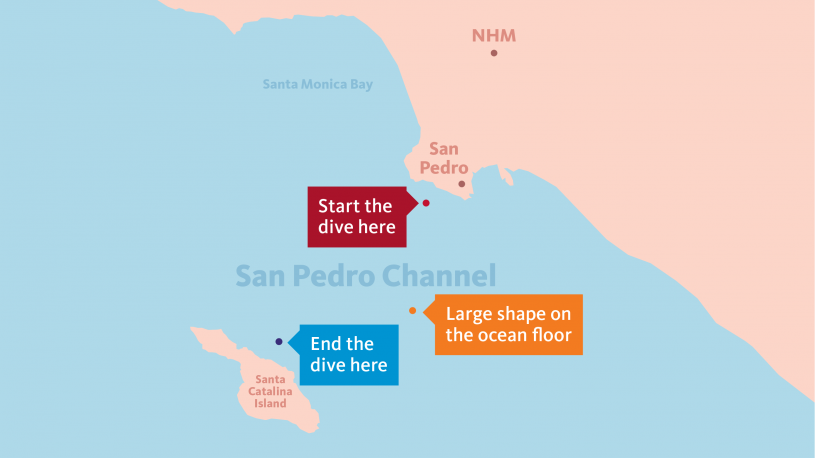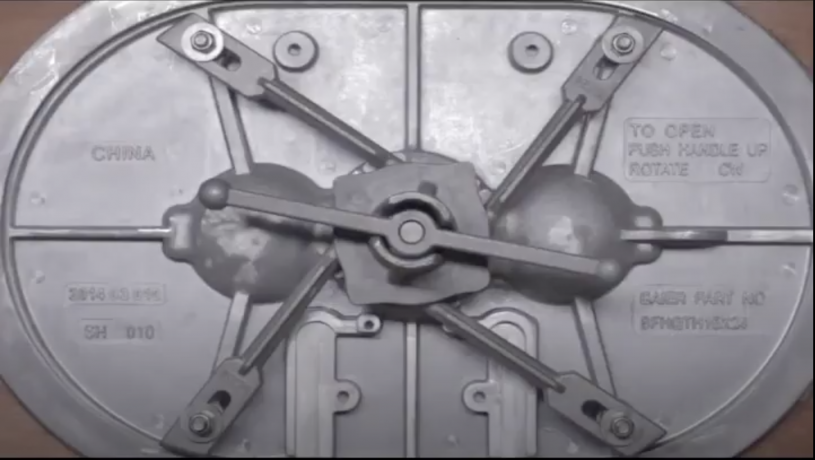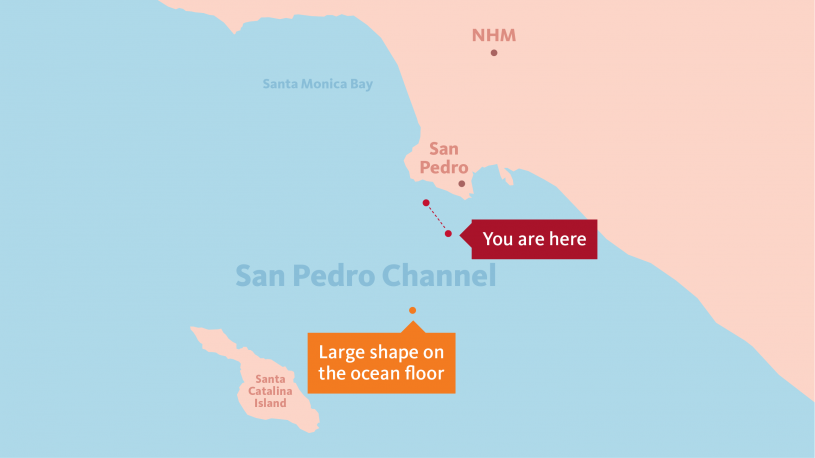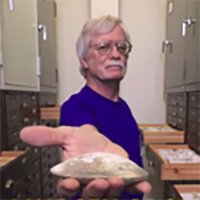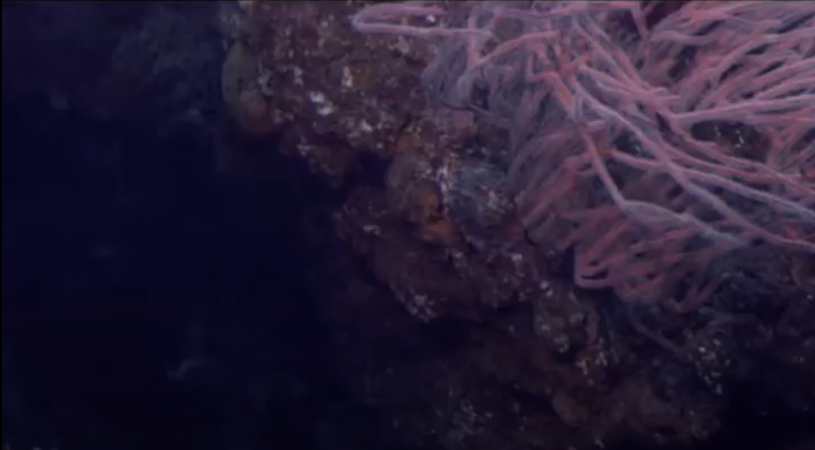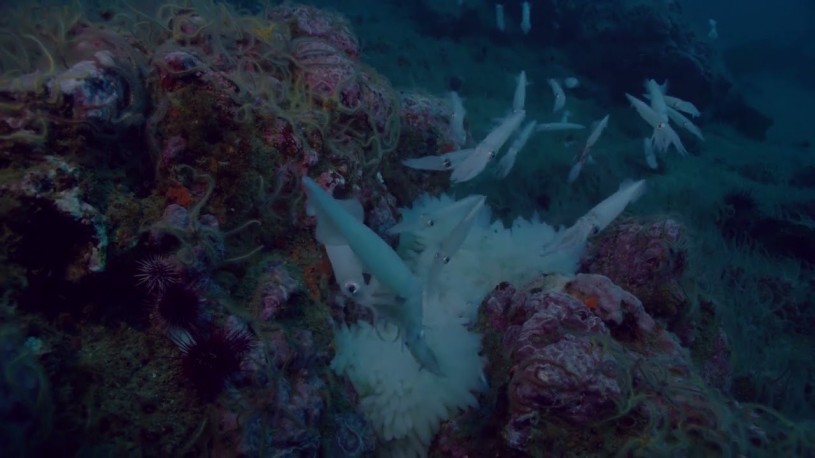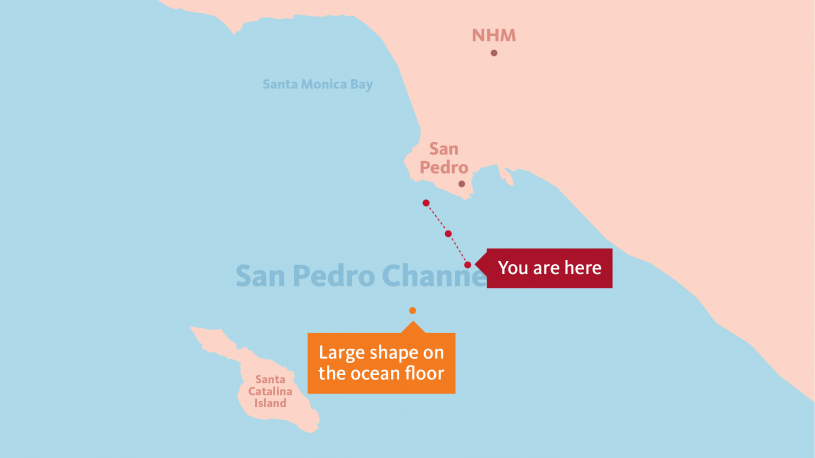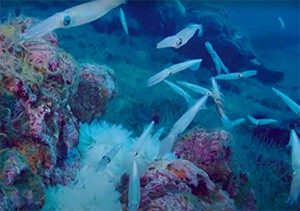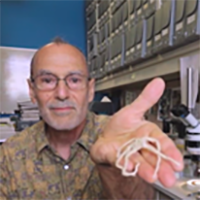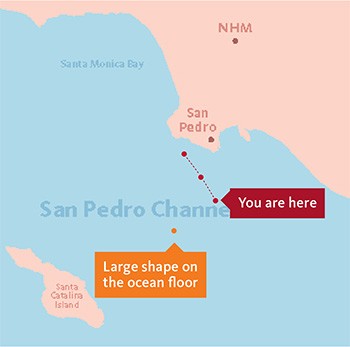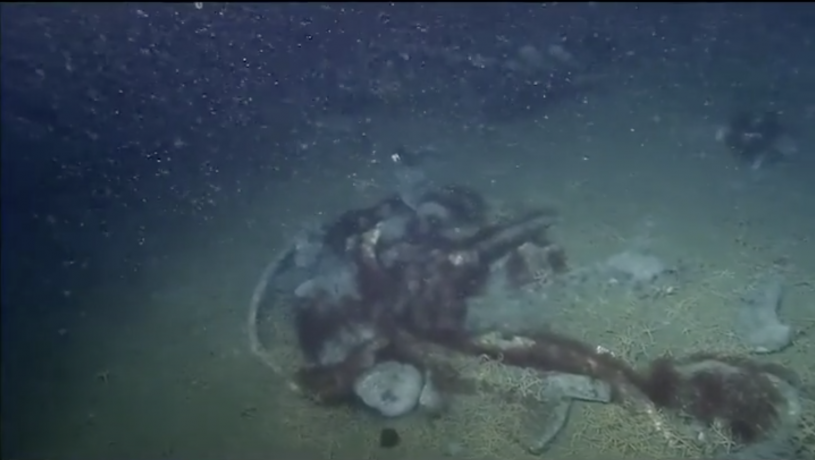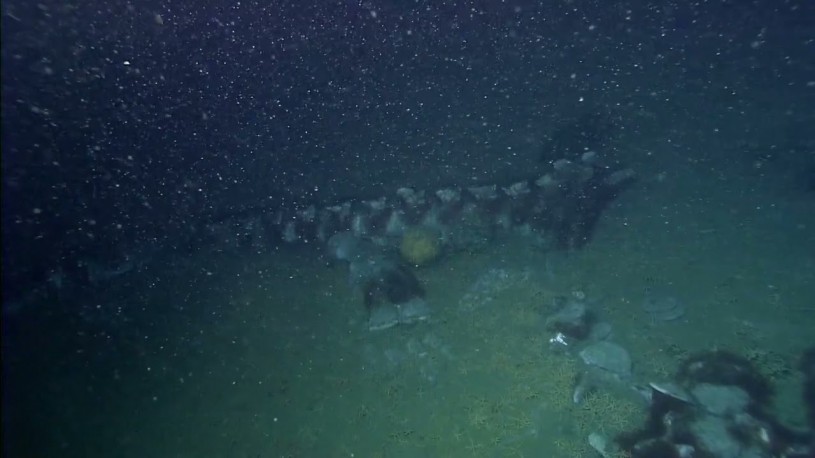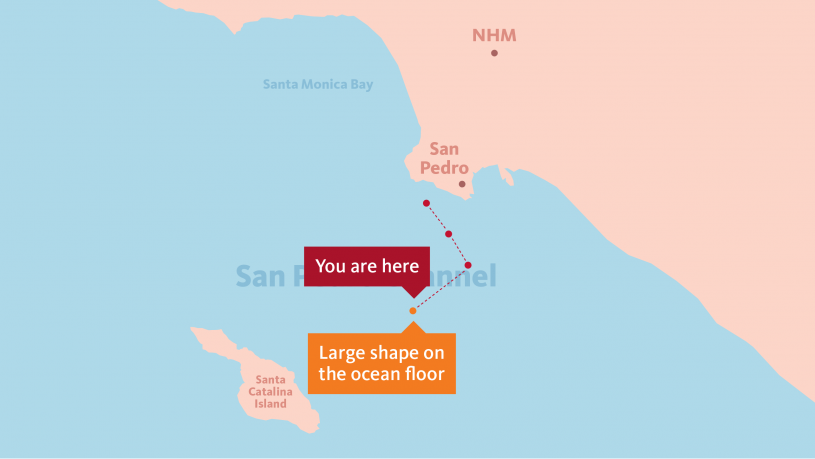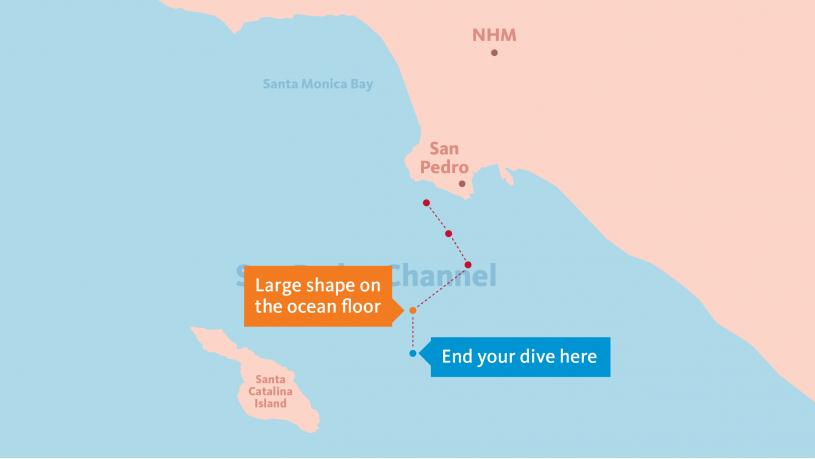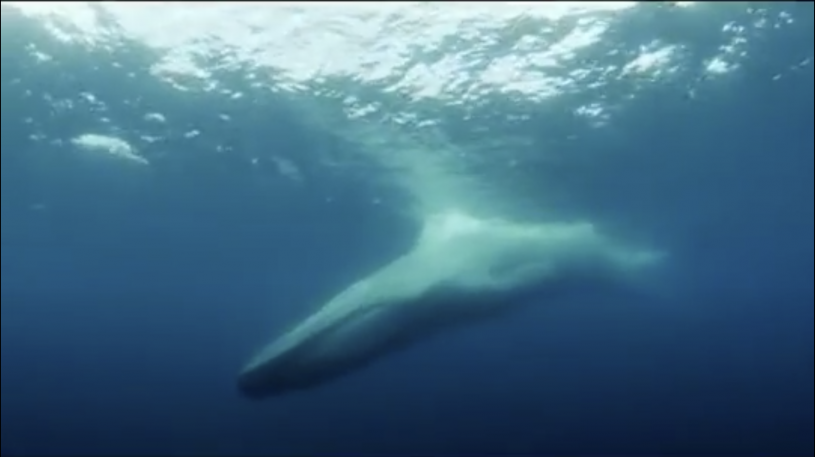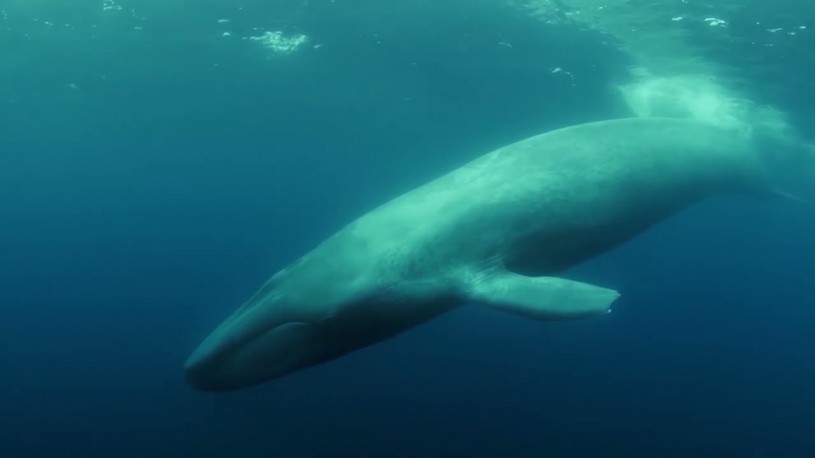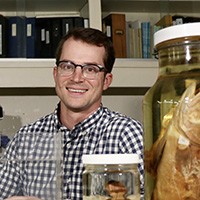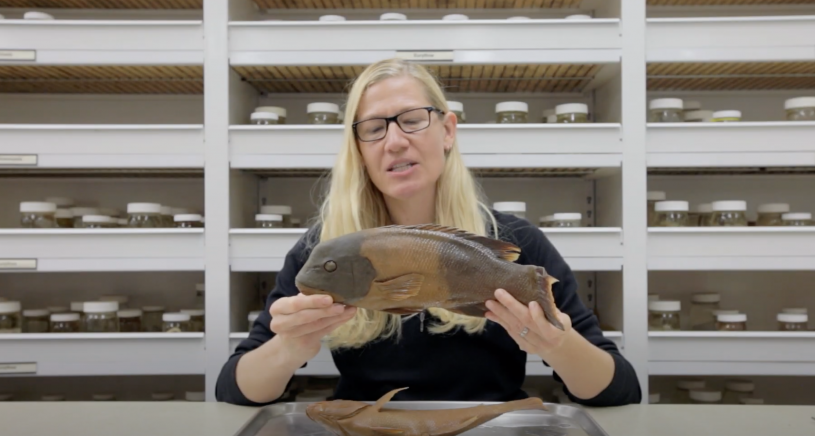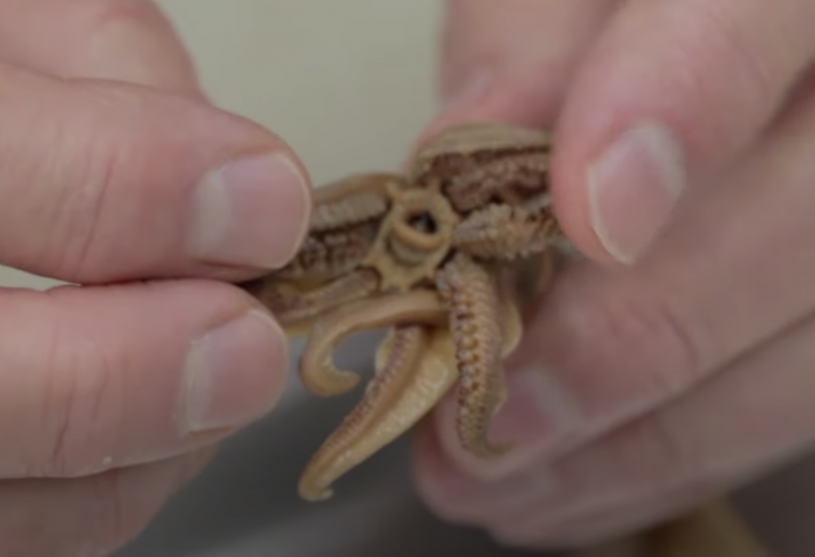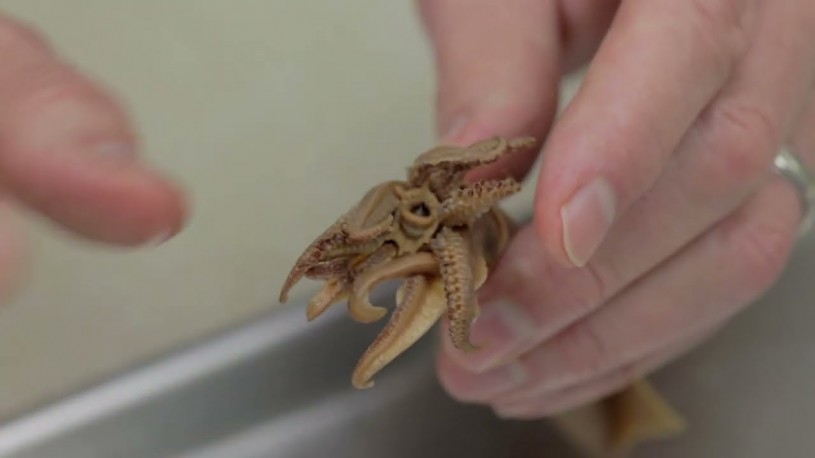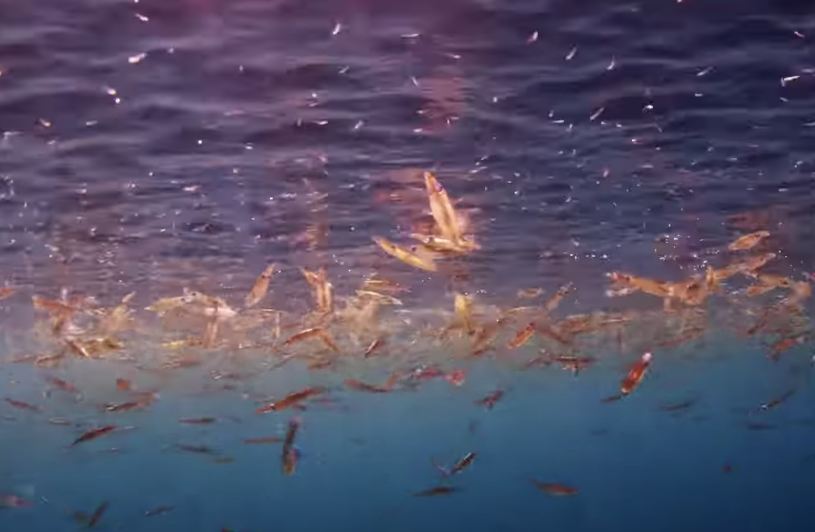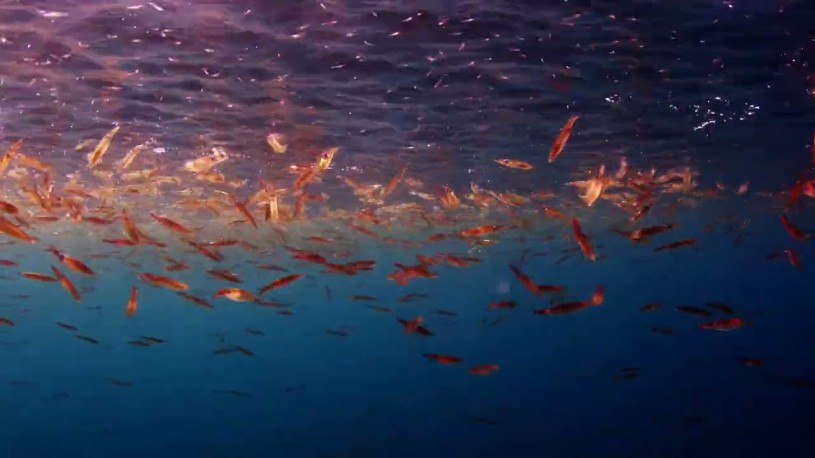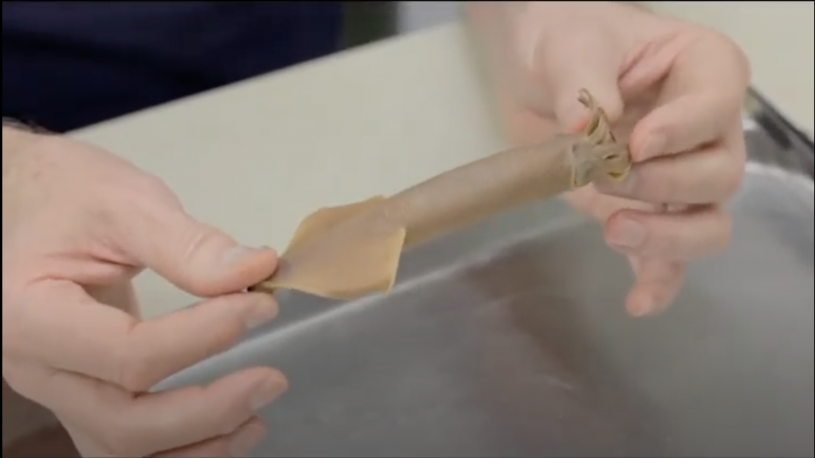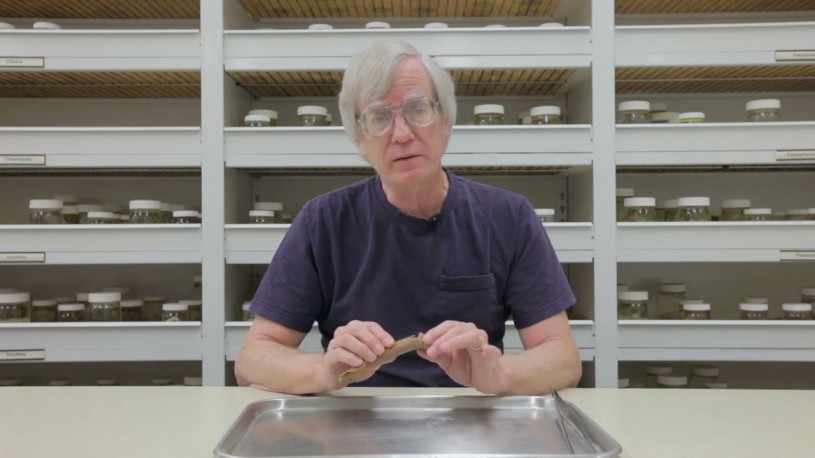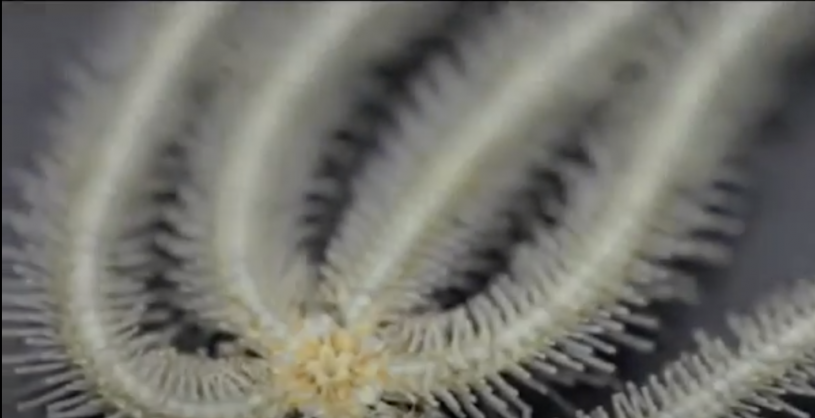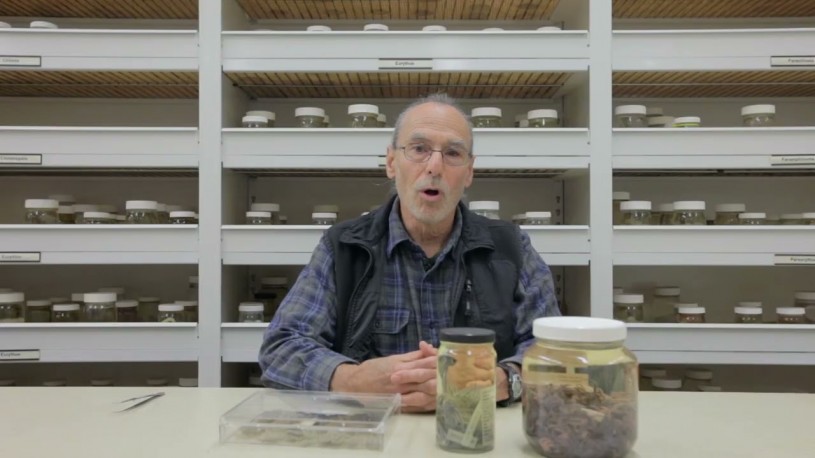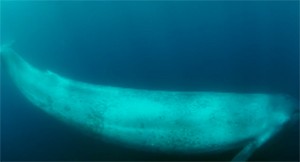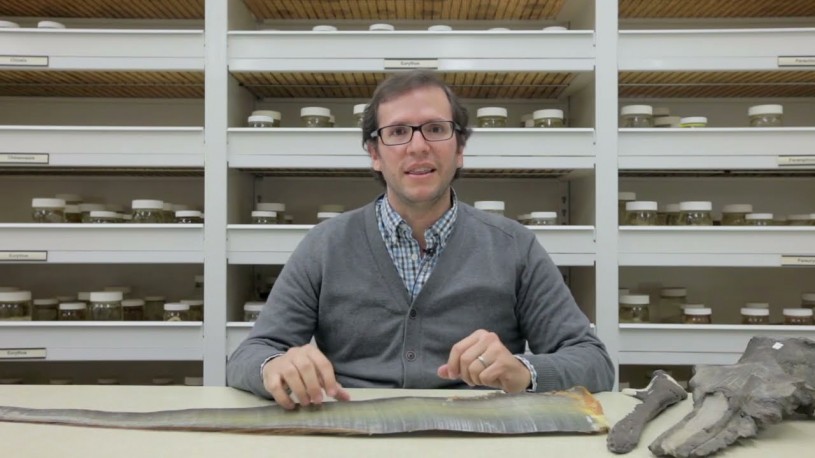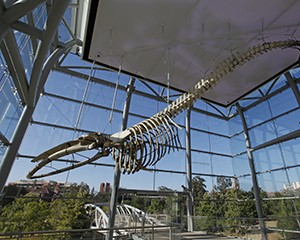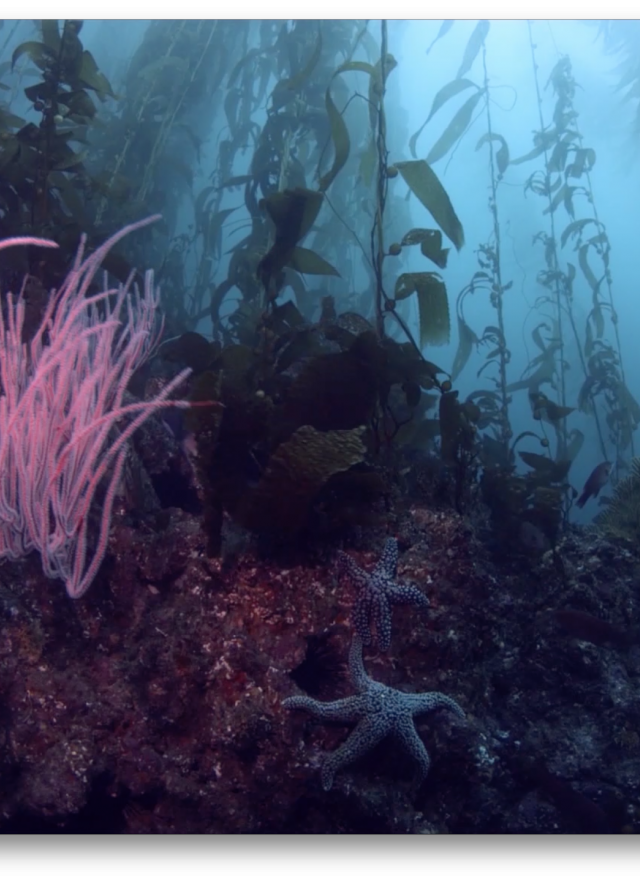
At the Natural History Museum, we study and share stories of the amazing nature in and around Los Angeles in the past, present, and future.
SUGGESTED FOR GRADES 5–12
We’re glad you decided to join us on this virtual field trip! Lead your class through this webpage, or have your students participate on their own devices at their own pace.
TIPS
Keep a piece of paper and pencil handy to answer prompts and participate in activities
Click on links for a deeper dive into topics
Use the table of contents below to skip to where you are in the dive
Chapter 1: Welcome to NHM!
Who is science for?
Everyone! Every time you notice something, ask a question, or look for an answer, that’s science! That curiosity is what our scientists bring to work with them every day.

Take a moment, close your eyes and picture a fish. Using a sheet of paper and pencil, draw that fish and label it.
How does your fish move, eat, and breathe? Where does it live? Add those details to your drawing.
Now consider: how do you know all of that information? Your brain remembers something that you’ve seen before, and uses that memory to create a picture when you hear the word “fish.” Nice work!
So now, how can you draw an even better fish next time? Easy! You need more knowledge to attach to the word “fish.” How do you get that information? You do research! If you research as many fish as you can, and learn as much as you can, you will have even more details in your brain to attach to “fish.”
It's that simple!
Science is just being curious! You observe, and then combine what you observe with what you already know. Scientists are people who do just that. They spend a lot of time observing a specific thing that they are really interested in (like this fish!). They observe, ask questions, then look for answers.
In this video, meet our ocean scientists and find out what inspires them!
Where can someone go to observe countless animals?
The Natural History Museum! Our Museum has over 35 million objects and specimens in our “collections.”
Collections are groups of objects organized into different categories and placed in collection rooms. We have a fish collection, bird collection, ancient artifact collection, dinosaur fossil collection, and so much more!
For example, if a scientist is interested in fish, they can come work with our museum, and access thousands of fish specimens in our “fish collection room.” This “employees-only” room in the back of the museum, is like a library, but instead of books, it has thousands of preserved fish in jars. The scientist can then observe all these fish and maybe make some discoveries that no one has ever made before!
How else do we study the ocean?
Let’s meet some groups who are doing ocean research at NHM!
D.I.S.C.O.
(Diversity Initiative for the Southern California Ocean)
D.I.S.C.O. creates new ways to learn about what’s in the ocean!
Community Science
Community Science brings our community together to help identify and study nature!
On rare occasions, we get to go underwater!
Exploring underwater can be a great way to collect samples and see what’s out there. But scientists need special technology and licenses to travel underwater or collect animals.
In 2019, D.I.S.C.O. hosted a 2-week BioBlitz in Long Beach, California. It was called the Los Angeles Urban Ocean Expedition (LAUOE). SCUBA divers and boats went out with nets and collected specimens. At a shoreside lab, specimens were sorted, identified, preserved, and had their DNA sampled by scientists and volunteers. Depending on what scientists are studying, they may use many ways to learn about ocean life and habitats. They may SCUBA dive, use remotely operated vehicles, sample with nets and grabs from the surface, or on very rare occasions they will get to take part in an underwater journey in a submersible!
Chapter 2: Prepare to Dive!
It’s your turn to study the ocean!
Today we welcome you aboard our virtual “submersible,” a submarine that is used for scientific research. We need you to travel to the bottom of the ocean and observe marine life in Southern California!
Before you go, let’s review some tips for a successful virtual dive and learn the details of your mission.
- Keep a pencil and paper handy to record your observations and questions
- Click the blue links to discover more about the topics that interest you most.
- If you would like to have deep-sea sounds in the background while you go on this dive: in a different tab search for “underwater ocean sounds” and select one you like to play in the background while you continue with this slideshow
Watch this video for your mission details!
Taking notes like a scientist
Your main mission is to make observations about that “large shape” at the ocean floor. However, you will see a lot of plants, animals, and environments along the way. Other ocean scientists at the Museum need you to take scientific notes and investigate certain animals.
You'll study 4 types of animals on this journey:
Fishes
Squids
Brittle Stars
Mammals
Don't worry, later on you are going to learn more about these animals and the scientists who study them!
Using a sheet of paper and a pencil, you can:
- Write notes or questions
- Draw something
- Label things
- Or all of the above!
Write questions you might want answered, such as:
- What does it eat?
- How does it protect itself from predators?
- How does it attract mates?
Make notes about the animal, such as:
- Habitat
- Behavior
- Body structure
Scientists spend hours watching unnoteworthy dive footage in order to get to the good stuff. By doing this they make new discoveries!
Our dive videos are only a few minutes long, so stick with them, and take notes on the busiest parts and the emptiest parts! You can draw or write about any of the animals, plants, or environments you encounter. When it is slow, take time to add to your notes. Keep watching for signs of life, but remember, sometimes what you don’t see can be just as important as what you do see.
Chapter 3: Dive, Dive, Dive!
Investigate Ichthyology (fish science)
When you dive to the depth of 10–60 feet, Chris the Ichthyologist (fish expert), wants you to take notes on the different fish you see. Specifically, she thinks you may see a fish that is common off the coast of California.
These fish are pink (sometimes pink and black), medium-sized, and found in kelp forests. While you’re here, you need to collect notes for the museum. Remember, your eyes will be your most important tool on this journey. You can’t hear or touch the creatures out in the water, but you can most definitely explore and investigate them!
Watch the video below to sink the submersible into the water!

Did you notice all those different fish? Then you were doing ichthyology!
DID YOU SEE THE PINK FISH? THE SAME FISH CAME IN TWO DIFFERENT COLORS!
Why do you think that is? Do you have a hypothesis (educated guess) for why two fish of the same species are so different?
Take a moment to draw and label the fish body parts you saw and recognized.
Make sure to record your observations! Later, you will take your notes back to the museum to show Chris, and learn more about these fishes.
Investigate Malacology (Squids, clams, snails, and more)
The submersible sinks a little bit deeper, 80–90 feet below the sea...Lindsey the malacologist (mollusk expert) says you may see a special kind of squid gathering together at this depth.
He’s asked you to take notes on the behavior and anatomy (body structure) of any squid you come across. These special squid rarely gather together so they may be eating, mating, or fighting off a predator. Watch their behavior and take notes or make drawings on what you see!
Watch the video below to sink the submersible deeper!

Use the questions below to make more observations about what you saw, just like our scientists do!
Did you see big group of squid? There was a lot of activity; what were they were up to?
What did you notice about their environment? Other animals? Plants? Rocks?
What were those white things under the squid?
Did you notice how fast and agile they are? How do you think they move?
Excellent job doing ichthyology and malacology! You’re gathering so many observations to review with other scientists at the museum!
Investigate Echinoderms (sea stars, sea cucumbers, urchins and more)
Finally, you are entering the deepest point on this mission. When the submersible reaches 2500 feet, prepare to see animals that only exist in the deepest, darkest parts of the ocean! Gordon, one of our echinoderm biologists (brittle star expert), wants you to look for a certain brittle star that can sometimes be found at the bottom of the ocean.
You are also very close to that “large shape on the ocean floor” that Chris and Jorge wanted you to explore.
All we know is that it is:
Big
Not moving
Attracting a lot of scavenger activity (animals that eat dead things)
Be sure to write and draw what you see, and ask questions!
Watch the video below to sink to the deepest part of your journey!
There’s that large shape on the ocean floor!
Have you ever seen something like that before? Scientists would call this an anomaly, which means “something unusual.” You found some kind of deep water brittle star gathering! What did you notice about them?
- How do these brittle stars compare with the different species we saw earlier?
- Were there other animals here?
- What are the brittle stars and other animals doing here? Does it have to do with that large anomaly?
Investigate Mammalogy (whales, dolphins, sea lions and more)
You’ve almost returned to the water’s surface! Jorge the mammalogist (mammal expert), mentioned that when you get to the open ocean and are around 20–60 ft. below the surface, you may see some large marine mammals!
He’d like you to look for one in particular: the mammal he wants you to find is very large, often visits the surface, and is found near krill (small, pink, shrimp-like animals).
Be aware that the “open ocean” is mostly empty. Stay sharp, and keep your notes handy in case you see something interesting!
Press play to start your trip back to the surface!

Using the questions below, record your observations and any other thoughts on what you saw!
Whoa! Did you see that?
That animal was huge! Hopefully you took some notes and drawings! We have some bones and teeth similar to some animals back at the museum.
- Have you seen animals similar to this one?
- What was such a big animal doing so close to the surface?
Head back to the Natural History Museum and talk to our scientists so we can discover more about the animals we observed!
Nice work, you have safely reached the surface!
Now it’s time to travel to the Natural History Museum. At the Museum we have behind-the-scenes rooms; let’s take a peek into these “collection rooms” and laboratories. Laboratories are where scientists look closely and compare specimens in the collection. Today, when you arrive at NHM our scientists will examine your observations and notes. They will compare the animals to items in our collection and help you identify what you saw! This is called a comparative analysis, and it’s a common way scientists identify animals and discover new species!
Chapter 4: To the Laboratory!
Welcome back from the San Pedro Channel!
Thank you for all of your observations during the dive, that was a successful trip! Now head inside to reunite with our scientists, who will help you identify the four focus animals and their interesting adaptations. You will also review your notes and solve the mystery of the large deep-sea anomaly!
Meet up with Chris and Bill to talk fish
Chris and Bill are ichthyologists, and experts when it comes to L.A.’s ocean. They study and take care of the fish specimens on display at the museum.
Specimen Research: Ichthyology
Remember the pink fish that Chris wanted you to find?
Chris told you that these fish are medium-sized, pink (sometimes pink and black), and found in kelp forests.
Observation Review
Review your notes about the fish, and add:
What are some ways that you can tell these fish apart or organize them? Can you group them by color? By behavior?
Chris compared your dive observations to the fish in her collection, and revealed that the pink fish is a California Sheephead! Chris says that all California Sheephead are born female, but that some of them will turn into males later in their lives. The two different color patterns that you observed help tell the difference between females and males.
Listen to Chris review your observations, and learn more of what she knows the fish in our oceans!
Now let’s find Lindsey to talk about squid!
Malacology isn’t just about squid! Malacology is mollusk science (which includes squids, clams, snails and more). This means he knows a lot about the second animal that you focused on today.
Lindsey likes to study mollusk fossils to uncover what Los Angeles looked like millions of years ago! (Hint: Back then, you might have needed a wetsuit!)
Specimen Research: Malacology
When you were between 80 and 90 ft., you spotted that special kind of squid. Lindsey asked you to take notes on the squids’ behavior and anatomy (body structure). Remember, this type of squid rarely gathers together, so here are some ideas of what they could be doing: mating, eating, or fighting off a predator.
Observation Review
Take a moment to review your observation notes from the dive.
With your observations in mind, write down your hypothesis (educated guess) about what the squid were doing and why.
Listen to Lindsey discuss all three options for the opalescent squids’ behavior in the videos on the next three pages. Once you have watched all three videos, write down which behavior you think you observed during the dive, and try to give three reasons why (scientists always give evidence to help prove their point).
Are they mating?
Could they be eating?
Are they protecting themselves?
Gordon will tell you more about brittle stars!
Just like malacology isn’t only about squids, the study of echinoderms isn’t only about brittle stars. It covers many animals, including sea stars, sea cucumbers, sea urchins, and more!
Gordon is a pro at conducting marine research using tools like SCUBA gear and submersibles. He can help you figure out what types of brittle star you observed during your submersible dive!
Specimen Research: Echinoderms
When you got down to 2,500 ft., you saw animals that live extreme lifestyles in deep parts of the ocean.
Gordon asked you to look for brittle stars that were gathered in groups. Did you notice there were different types? What is your best hypothesis (educated guess)?
- Did they find something delicious?
- Did they find a safe home?
- Could they have found mates down here?
Observation Review
Review your brittle star notes from the dive. What did you notice about different brittle stars from different depths? With your observations in mind, write down your hypothesis. Why did the brittle stars gather?
Gordon confirms we saw two different types of brittle stars. Great observations!
There were deep-water brittle stars at the anomaly, and we passed shallow-water brittle stars before that. In the video on the next page, Gordon says that there are huge numbers of super tiny animals and plants that drift through the water and are caught on the spines of these shallow water brittle stars, and that is what they eat! But, since food is scarce at the bottom of the ocean, deep-water brittle stars will often grab whatever they can eat, living or dead. Though we saw two different species of brittle stars, they can have similar behaviors.
What seemed similar between the two types of brittle stars we saw?
Jorge can help us understand marine mammals! Jorge likes to research prehistoric marine animals to try to uncover what the world looked like millions of years ago. He helps choose and take care of the specimens on display in the museum’s Age of Mammals exhibit!
Specimen Research: Mammalogy
When you were resurfacing from the dive, you probably noticed that the open ocean was pretty barren (empty). Jorge wanted you to spot a mammal that was really big, visits the ocean’s surface, and likes to spend time around big groups of krill (small, pink, shrimp-like animals).
Observation Review
Take a moment to review your observation notes from the dive.
What did you notice about the mammal when you saw it before?
Add to your notes: Why do you think this animal lives so close to the ocean’s surface?
Jorge is certain you saw a blue whale!
Did you know that the blue whale is the largest animal that has ever existed on Earth? They can grow to 100 feet long, making them larger than any dinosaur! Jorge says that millions of years ago, the blue whale’s prehistoric relatives were much, much smaller! How did they became as big as they are now?
In this video, Jorge explains what he thinks the blue whale’s prehistoric relatives looked like.
Thank you for joining us in the lab!
We are so grateful for your contributions to our research!
Today you observed some incredible animals, like the blue whale that Jorge told you about! Compare: NHM’s giant, glorious fin whale skeleton is only about half the size of a blue whale!
Wait a minute…these bones look familiar…did you see something like this during the dive?
Chapter 5: The Anomaly
Chris and Jorge think you made some important connections!
In the video below, hear from them about the anomaly on the ocean floor.
Thanks for joining us on the Ocean Experience Virtual Field Trip, and helping us discover a whale fall!
We are so glad you got a chance to see our marine neighbors deep in the Pacific Ocean, and meet some of our scientists at the museum. Next are some ways that you can keep exploring the ocean, too!
Chapter 6: Keep On Science-ing
You can keep doing ocean science without the submersible!
Anyone can do science at any time! Here's how:
Visit the Natural History Museum!
NHM is home to millions of objects and you can learn all about the ocean while staying on dry land!
- You can also visit us online! NHMLAC Connects is an opportunity to experience our Museum online.
- You can also apply to have our Mobile Museums come to your school or community event!
- Check out our open hours, and come visit us in person!
You can also visit the ocean!
If you find yourself by the coast, you can use your new skills to think like a scientist and make your own observations! Record your discoveries, take pictures of shells, ask questions, and when you return, you can look up what you saw!
Sign up to visit tide pools or a floating dock!
Tide pools at the ocean’s edge are uncovered only when the tide is low, letting us visit the animals and algae living there. Floating docks, where people keep boats, are often covered with diverse life under the water’s surface.
And don’t forget to explore what others have discovered!
By looking online, watching a video, reading a book, sharing knowledge with others, we can discover more about our natural world. Stay connected, and stay curious! The next big discovery could be yours!
